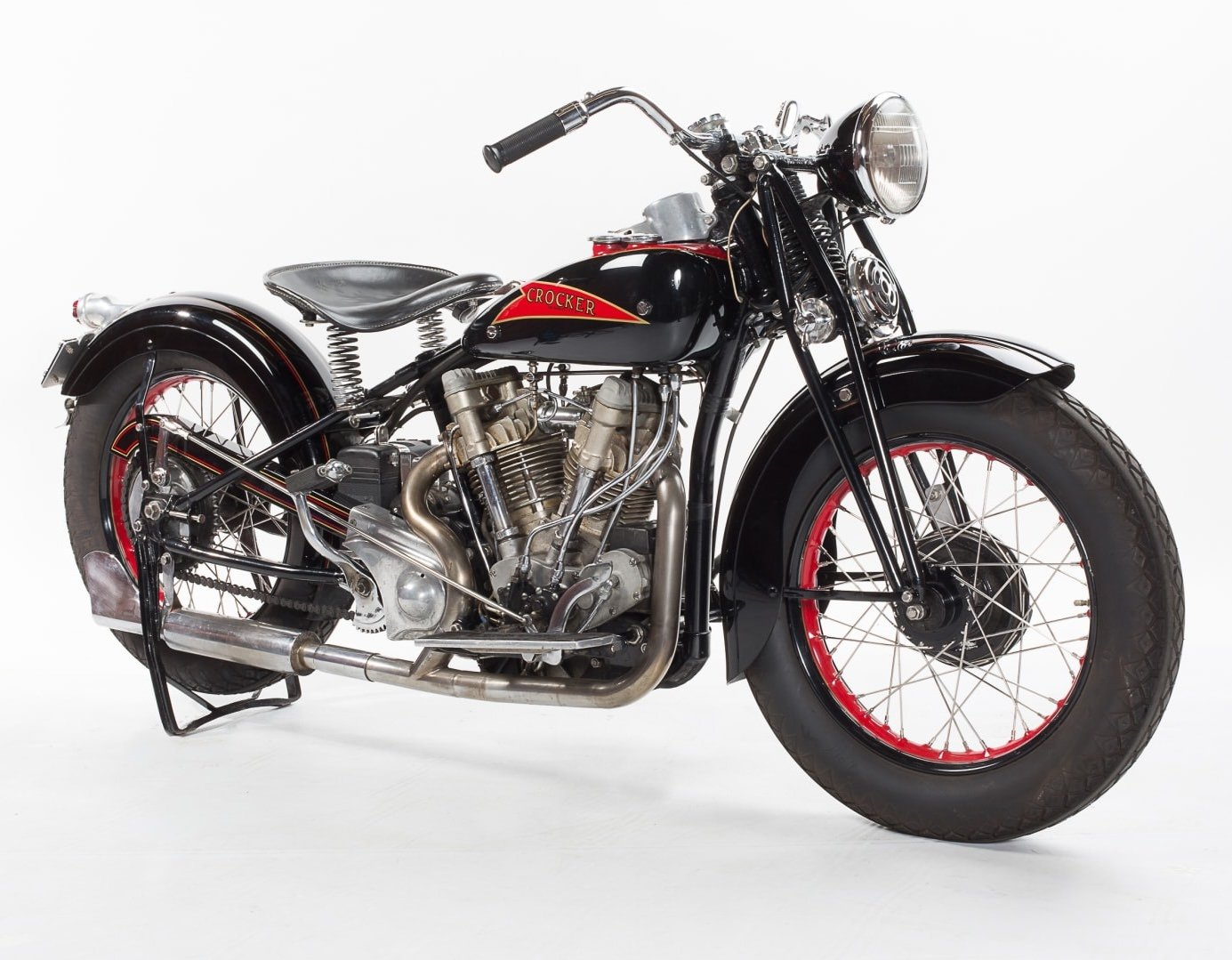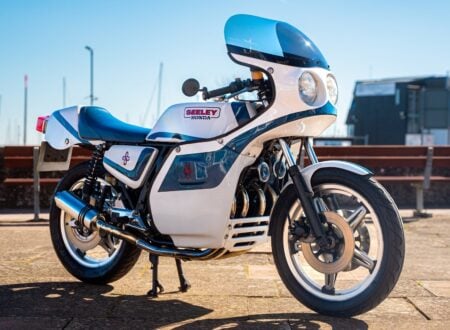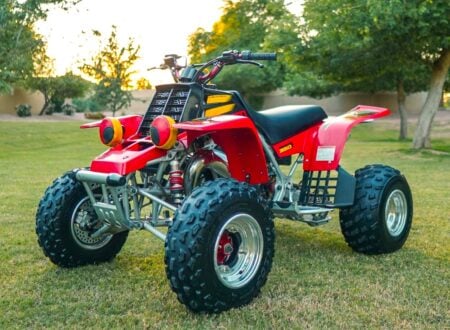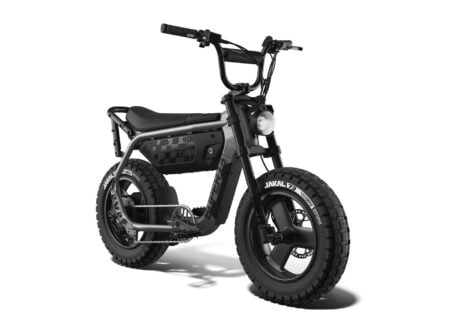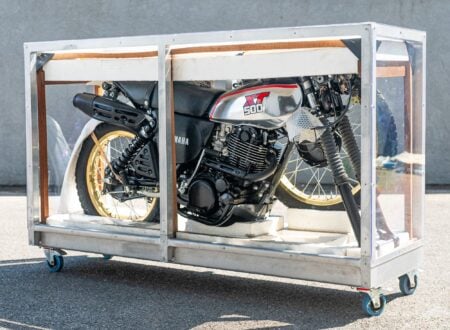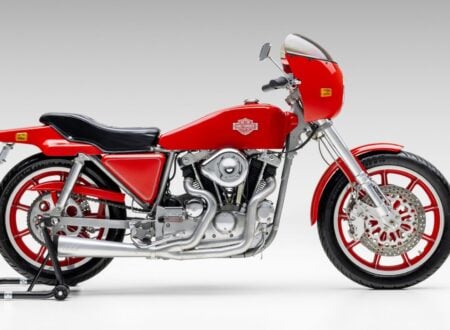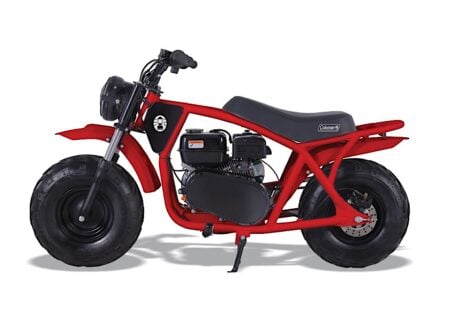This is an original 1938 Crocker Twin, a motorcycle that’s largely forgotten today, but back in the 1930s it was the fastest American production motorcycle that money could buy – hitting speeds of over 110 mph.
The reason for the remarkable speed of the Crocker Twins was that Al Crocker had been developing racing motorcycles for decades, and even personally raced them himself back in the 1900s. In the 1930s he developed his own speedway single-cylinder racing engine, and this would form the foundation of Crocker V-twin-powered motorcycles that today sell for hundreds of thousands of dollars each.
Fast Facts – The Crocker Twin
- The Crocker Twin, developed by Al Crocker and Paul Bigsby in the 1930s, was the fastest American production motorcycle of its time, capable of exceeding 110 mph. It was loaded with innovative engineering, including a powerful in-house developed V-twin engine derived from Crocker’s earlier success with racing motorcycles.
- Al Crocker, an accomplished engineer and racer, collaborated with Paul Bigsby to create high-performance motorcycles. Their early work included overhead valve kits for Indian Scouts, eventually leading to the creation of Crocker’s own V-twin motorcycles known for their exceptional power-to-weight ratio.
- The 1936 Crocker Twin debuted during the Great Depression, with bespoke designs tailored to each buyer. Its strong 3-speed gearbox and expandable engine displacement made it unique, and production lasted until World War II when production shifted to wartime manufacturing.
- The 1938 Crocker Twin highlighted here was once owned by Ernie Skelton, a key figure in preserving Crocker legacy. Now fully restored, it is set for auction with Mecum in Las Vegas, offered with no reserve and extensive documentation detailing its storied history.
The Incredible Story Of Crocker Motorcycles
Al Crocker was born in 1882 and would later graduate with an engineering degree from the Armour Institute, part of the Illinois Institute of Technology. Out of college, Crocker would work for the Aurora Automatic Machine Company, the firm that built the popular Thor motorcycles of the time. Al showed a natural aptitude for both engineering and racing – winning a number of endurance racing events himself in 1907, 1908, and 1909.
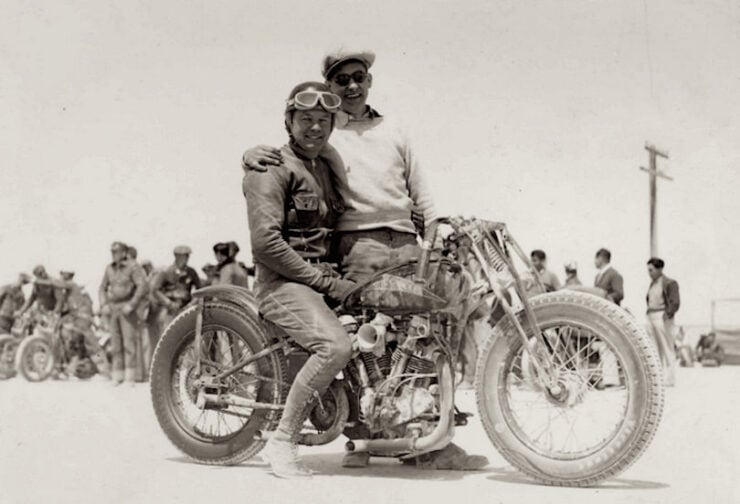

It would be in the hotly contested field of motorcycle racing that he would meet Oscar Hedström and Charles Hendee, respectively the President and Chief Engineer of the Hendee Manufacturing Company, the constructors of the famous Indian racing and production motorcycles.
The two men would offer Crocker a job, recognizing his ability, and Crocker would work for the company in some capacity or other for decades – eventually running his own Indian dealerships. At first Al would run the Indian dealership in Denver, Colorado before taking over the one in Kansas City.
He would later travel west and buy the Freed Indian motorcycle dealership in Los Angeles where he would be based for many years, and where he would start his own motorcycle marque – Crocker Motorcycles. As the story played out, Crocker Motorcycles was essentially a small performance parts operation that got out of hand.
Al Crocker hired pattern-maker and machinist Paul Bigsby and together the two men would begin producing overhead valve kits and steering dampers for motorcycles – the OHV kits were for Indian Scout 101 engines which were being used for racing.
Soon, the conversion from side valve to overhead valve wasn’t enough to remain competitive, and so Crocker and Bigsby got their heads together and designed an all-new overhead valve single-cylinder racing engine.
The 500cc engine they developed was almost unbeatable, it made its debut at the Emeryville, California speedway track in 1933, and promptly won 9 of the 12 races. With further development the engine would become quicker still, and it wasn’t until two years later when a new JAP speedway engine from England debuted that the Crocker engine became beatable.
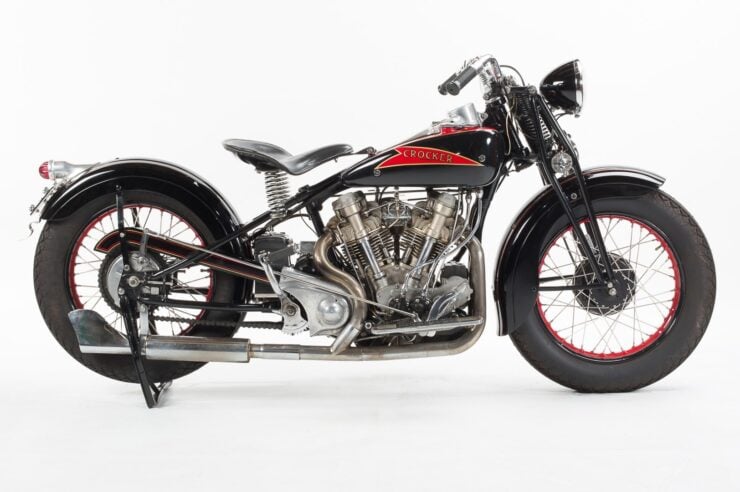

The Arrival Of The Crocker Big Twin
Rather than develop a new engine for speedway racing, Crocker and Bigsby opted to create a new V-twin with a displacement of 1000cc, using cylinder and hemispherical head designs strongly influenced by their earlier OHV singles.
Thanks in no small part to its racing heritage, this Crocker V-twin offered an excellent power-to-weight ratio – with between 55 and 60 bhp. These were staggering figures for the era that pushed the bike to a top speed well over 100 mph – the approximate equivalent to a modern superbike surpassing 200 mph.
The Crocker Big Twin would debut in 1936, a difficult time for any motorcycle manufacturer as it was right in the midst of the Great Depression. despite this, orders for the Big Twin began to roll in and production commenced.
Much like high-end motorcycle manufacturer Brough Superior in England, each bike built by Crocker was made bespoke for its owner, to their personal specifications. The V-twin engine had been designed from the outset to be made larger, and so the 1000cc capacity could be extended out past 1400cc by boring and stroking it – increasing power even further.
Crocker built the frame, engine, and gearbox in-house. The 3-speed gearbox was a load bearing part of the frame, and it’s famed for its incredible strength – it had been over-engineered as Crocker and Bigsby always intended to enlarge the engine in the future.
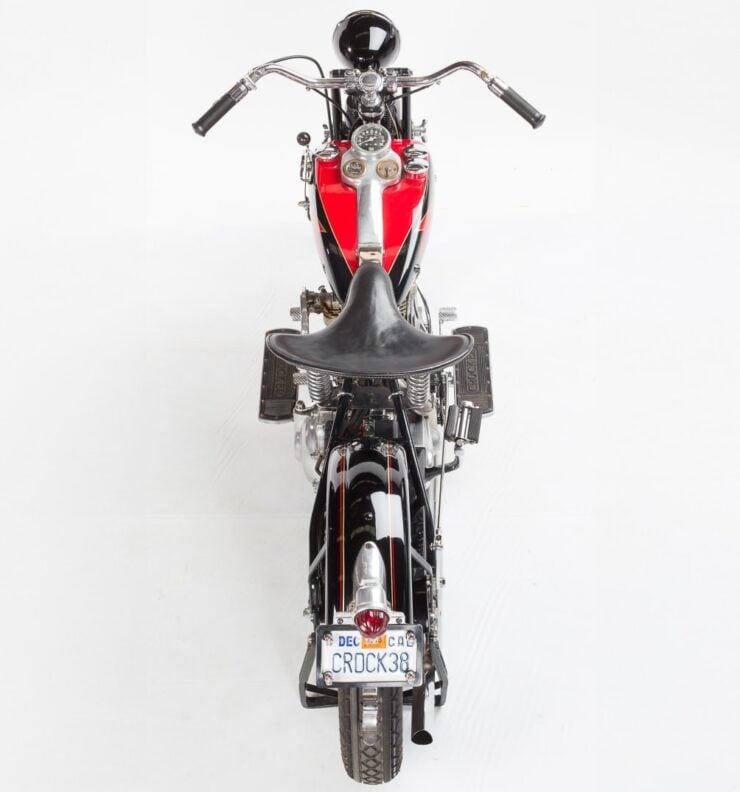

The initial production run of Crocker Big Twins would be retroactively nicknamed the “Small Tanks” as in 1938 the “Big Tank” would appear, with a larger fuel tank and a number of other changes.
The Big Twin left production after the outbreak of WWII, when Crocker turned their machines over to making materials for the war effort. This might have saved them however, as the Harley-Davidson EL ‘”Knucklehead” with its overhead valve V-twin debuted shortly after the Crocker Big Twin. The Knucklehead was quite a bit cheaper, though it was also heavier and less powerful.
How Many Crocker Big Twins Were Made?
Sadly, there is no widespread agreement on just how many examples of the Crocker Big Twin were made, though 72-75 seems to be the most agreed upon range. Today they sell for figures well into the hundreds of thousands of dollars, comparable in value to the Brough Superior SS100 from Britain.
The 1938 Crocker Twin Shown Here
The motorcycle you see here is a 1938 Crocker Twin that formerly belonged to Ernie Skelton – one of the most important people in the annals of Crocker history, other than Crocker and Bigsby themselves.
Skelton was one of the biggest evangelists of the Crocker marque long after the brand had stopped building motorcycles, and he personally rescued a significant number of Big Twins with his friend and fellow Crocker enthusiast Chuck Vernon.
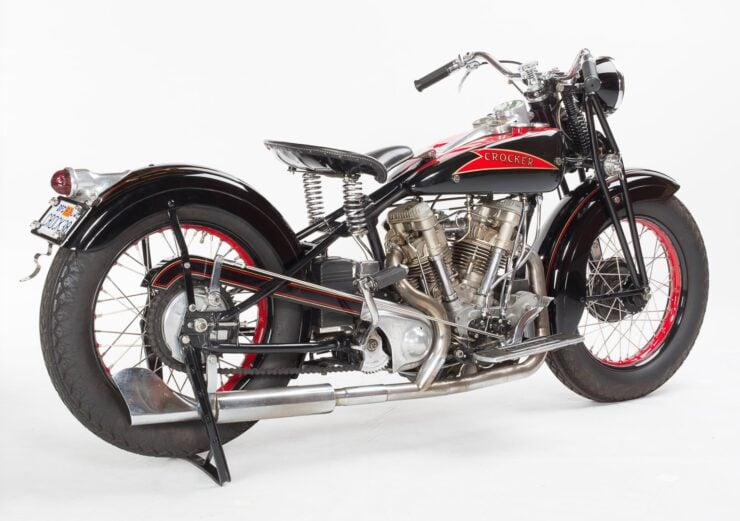

This previously restored Crocker Big Twin is now scheduled to roll across the auction block with Mecum at their Las Vegas Motorcycle auction on the 1st of February, and it’s being offered with no reserve.
It comes with ample documentation, and you can visit the listing here if you’d like to read more or register to bid.
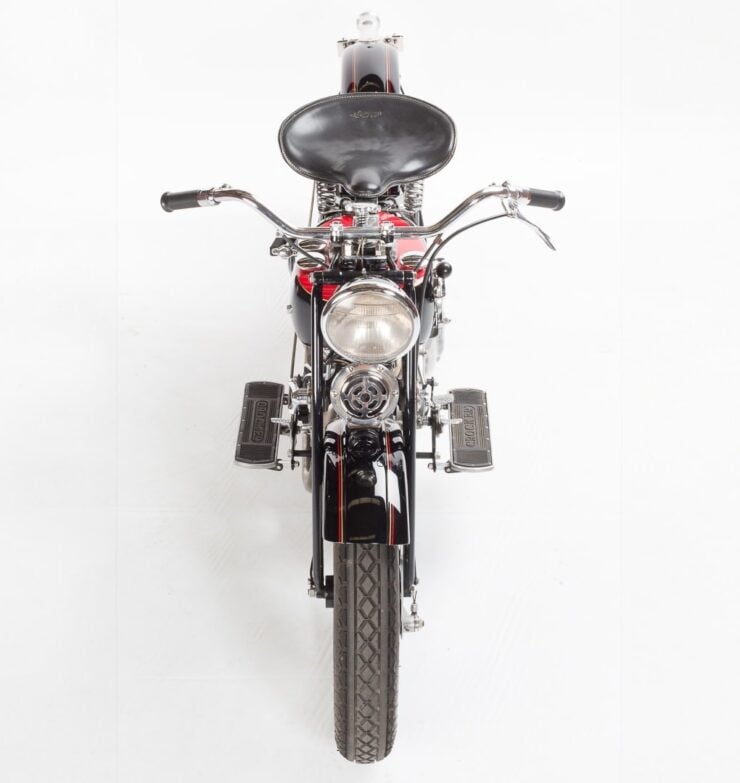
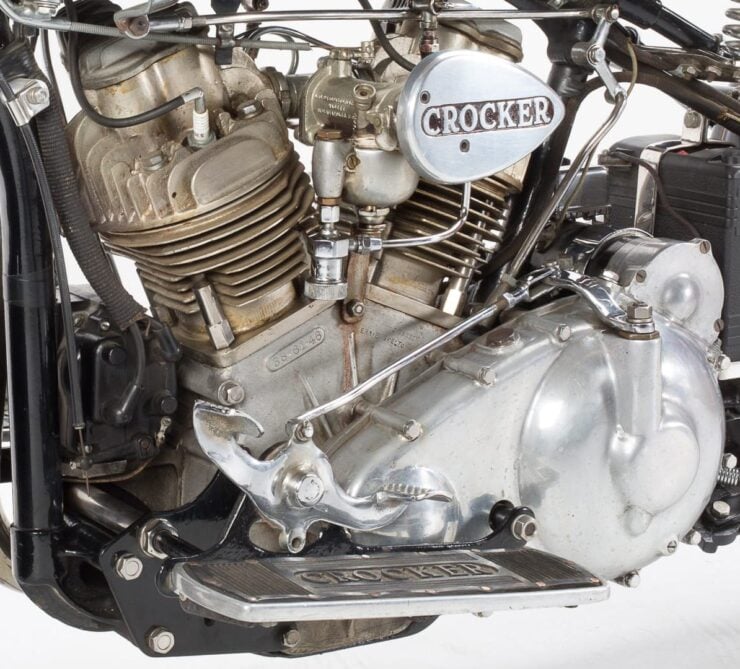
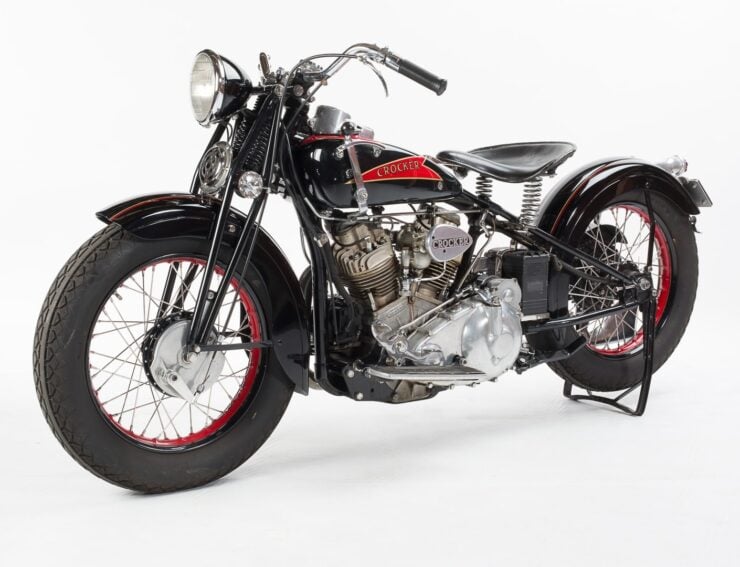
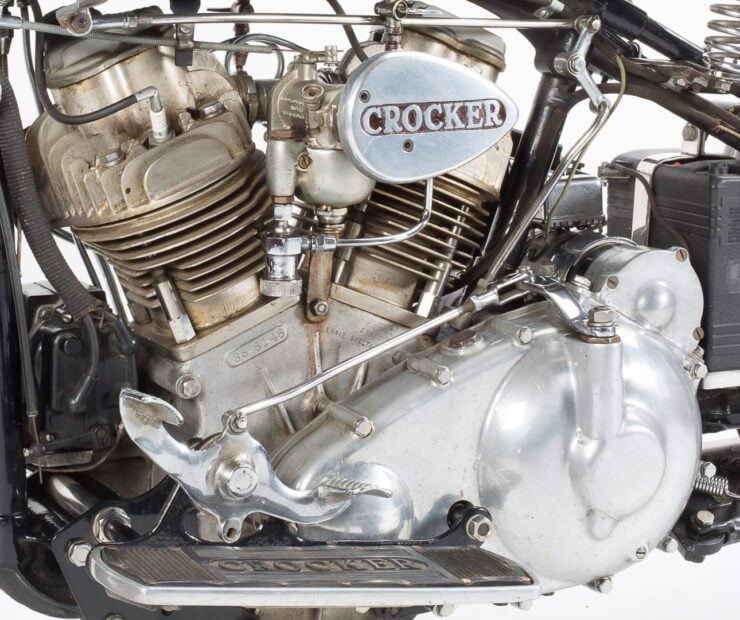
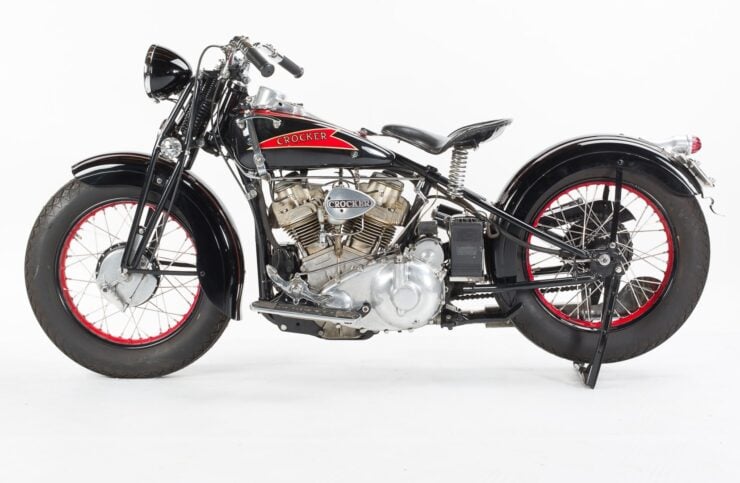
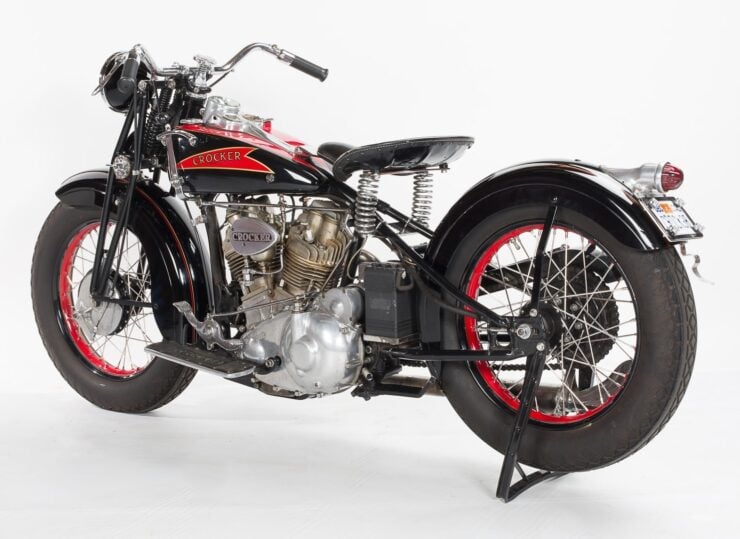
Images courtesy of Mecum

